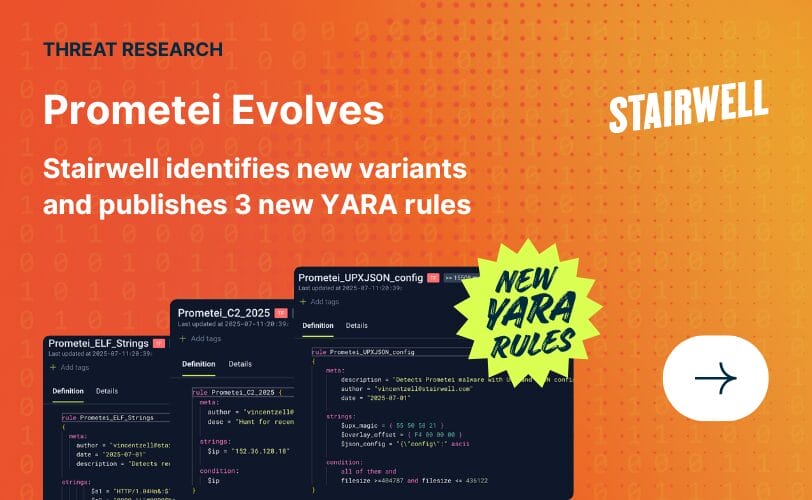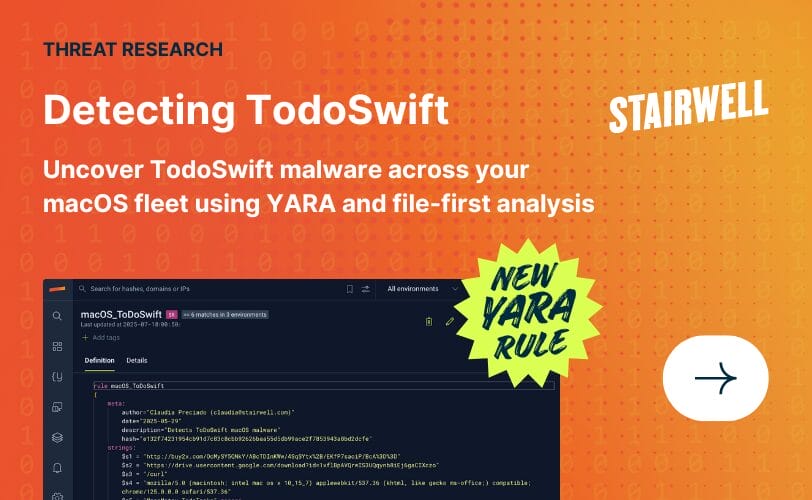Why automating SOC flows isn’t enough: It’s time to break down the silos in your security operations
In the rush to bolster cybersecurity defenses, many organizations are betting on automation to streamline their Security Operations Center (SOC) workflows. Automation promises efficiency, speed, and consistency — critical elements in a landscape where new threats emerge daily.
But here’s the harsh reality: simply automating existing SOC flows isn’t going to solve your biggest challenges. In fact, it could be blinding you to a far larger issue.
The bigger question: Is your company compromised?
Let’s be honest: machines are going to get hacked. Not every compromise is a threat to the company, and understanding security signals requires deeper analysis.
Too often, companies react to individual incidents — rushing to patch systems or contain breaches. They focus on fixing symptoms rather than translating investigations into long-term improvements. The reason? Security teams often work in silos:
- Security Operations Center (SOC) teams are dedicated to day-to-day monitoring and incident management.
- Threat Analysis (TA) teams are analyzing and interpreting the latest threat intelligence.
- Incident Response (IR) teams are jumping in after the breach to contain damage and remediate.
These teams are fighting the same fight, but with different tools, different data, and different priorities. Critical insights often get lost in translation, leaving gaps in the organization’s overall security posture.
“Bad data” makes your security automation a risky bet
If you’re working with incomplete information, your automation is doomed from the start. Logs – the primary data source for most security tools are fundamentally bad data when it comes to preventing threats like ransomware. Logs only tell you what’s already happened. They provide a record of events that have occurred, but by the time a log entry shows suspicious behavior, the damage is often already done. Ransomware, for example, is present in your systems long before you see any signs in your logs. Attackers have already infiltrated your systems, encrypted critical data, and left you scrambling to respond. By the time you detect it, it’s too late.
Garbage in, garbage out. You end up wasting money on tools that automate after-the-fact alerts, wasting time chasing false positives, and failing to achieve a tangible reduction in risk. Is this really reducing ransomware risks? If your data is only telling you about threats that have already executed, then the answer is no, your automation is just giving you a false sense of security. It’s not enough to simply make your response faster; you need to detect threats earlier, before they cause damage.
Stairwell is a step above logs. It continuously analyzes every executable file across your entire environment, not just those actively running. This allows you to spot ransomware, malware, and other threats before they reveal themselves through suspicious actions. By continuously reassessing all files against the latest threat intelligence, we detect threats that EDRs might miss, including those that lie dormant or disguise themselves to avoid triggering typical detection methods.
This proactive monitoring isn’t just about catching threats earlier; it’s also about making sure your SOC, Threat Analysis, and Incident Response teams are unified, armed with the same, high-quality data. This means no more wasted time, no more wasted dollars – just a tangible reduction in risk and a stronger, more resilient security posture.
How Stairwell crosses the chasm: A unified security architecture
By breaking down traditional silos, Stairwell enables seamless communication and coordination across all teams. Instead of working in isolation, your SOC, TA, and IR teams are part of a continuous feedback loop where every observation informs a collective response. This unified approach not only accelerates detection and response times but also ensures that your entire security operation is proactive, adaptable, and always one step ahead.
- History-aware threat reports: Our platform provides instant clarity on whether any of your files match known indicators of compromise. If a new ransomware strain is detected, you’ll know immediately whether it’s lurking in your environment — even if it hasn’t executed yet.
- Run to Ground (RTG): With RTG, a suspicious file isn’t just a red flag — it becomes an opportunity for deeper, collaborative investigation. SOC teams can initiate the analysis, Threat Analysts can trace the variants and related files, and Incident Responders can use this intelligence to quickly identify and isolate any active threats. You’re not just addressing the immediate issue; you’re preventing future incidents by uncovering hidden threats early.
- Investigations: Stairwell’s Investigations feature acts like a shared notepad that enhances team collaboration by allowing users to assign objects like files, hashes, or IP addresses to an investigation with detailed notes. It provides a centralized view of all findings, evidence, and actions taken, ensuring the SOC, TA, and IR teams can work together seamlessly on complex cases.
With Stairwell, you’re not just checking boxes or chasing alerts — you’re building a security posture that anticipates attacks and keeps you ahead of the curve.



